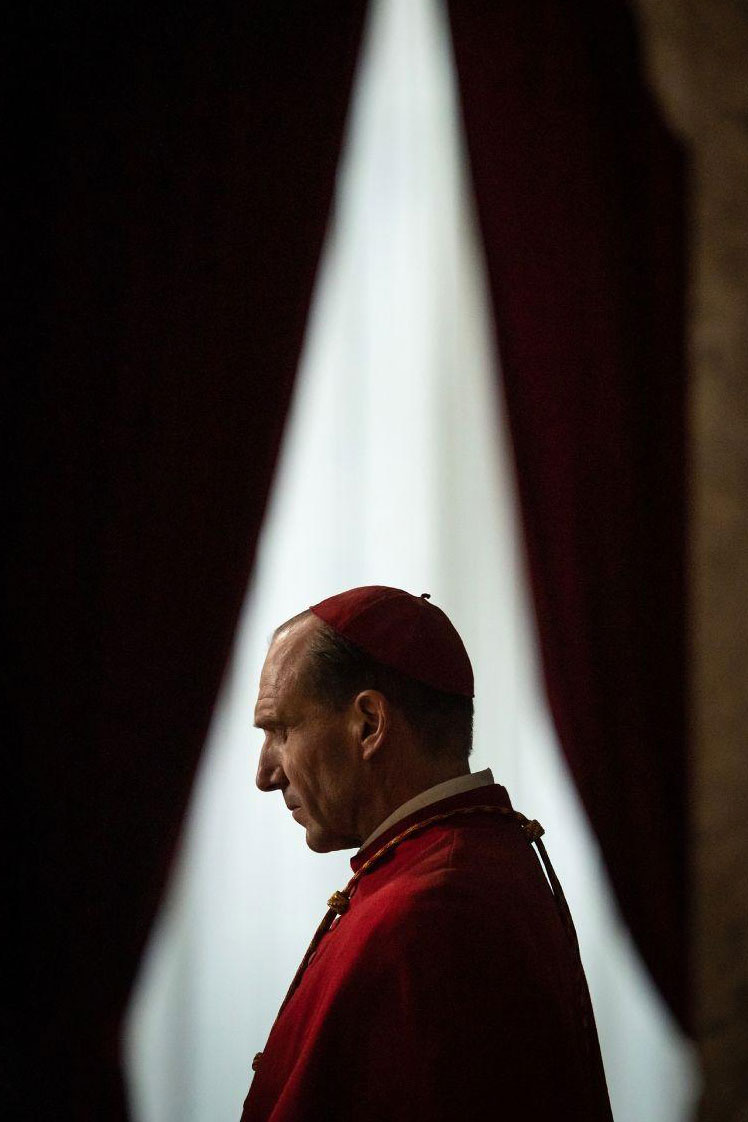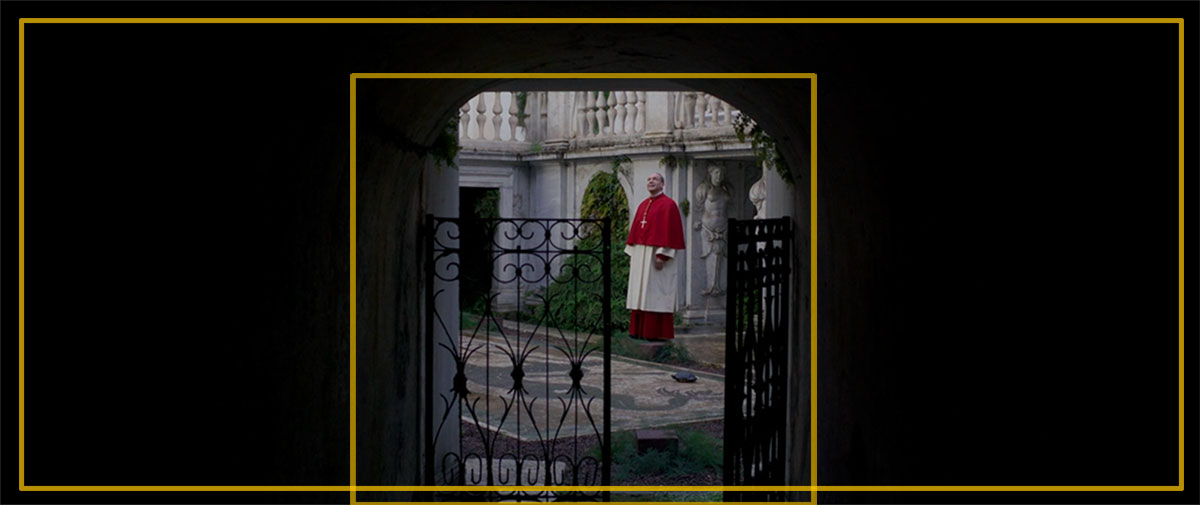In this article, I’ll break down the cinematography of Conclave (2024), exploring its visual storytelling techniques and creative use of light, framing, and composition. By analyzing key scenes, I’ll highlight practical takeaways that photographers can apply to their work, offering fresh insights into how movies can inspire compelling photographic narratives. Lighting, an essential aspect of photography, is equally vital in cinematography. Proper lighting sets the tone, defines characters, and shapes scenes by adding depth and texture.
The Role of Photography in Cinematography
Photography plays a crucial role in cinematography by providing the foundation for visual cinematic storytelling in movies. Cinematographers, often referred to as directors of photography, are responsible for crafting the visual language of a film, which includes framing, composition, lighting, and camera movement. These elements, rooted in the principles of still photography, are essential in creating mood, conveying emotions, and guiding the audience’s attention. Just as photographers capture decisive moments to tell a story, cinematographers use moving images to weave a continuous narrative, ensuring each frame contributes to the overall visual impact. Cinematographers try to draw inspiration from photography to create memorable visual moments in films, borrowing techniques such as high contrast, soft light, or chiaroscuro to evoke specific emotions. Similarly, framing and composition fundamentals in photography, help determine how a scene is perceived by the viewer. Cinematographers meticulously design every shot to mimic the impact of a powerful photograph, making each frame visually compelling and narratively meaningful.How Photographers Can Benefit from Cinematography
Photographers can gain valuable insights from watching movies by observing how cinematographers use visual elements to tell stories. Films offer rich lessons in dynamic composition, creative lighting, and visual pacing, all of which can elevate a photographer’s skill set. By studying how scenes are framed and illuminated, photographers can learn how to build mood and evoke emotion in their images. Moreover, observing how characters and environments are visually connected in cinema can inspire photographers to think beyond single images and explore storytelling through cohesive photo series. Let’s start and explore photography insights for photographers and discover the art of visual storytelling in the movie Conclave (2024)Lighting and Shadow Play
In general, the film employs low-key lighting to create a somber and mysterious atmosphere, reflecting the secretive nature of the papal conclave. This technique emphasizes contrasts between light and shadow, enhancing the dramatic tension.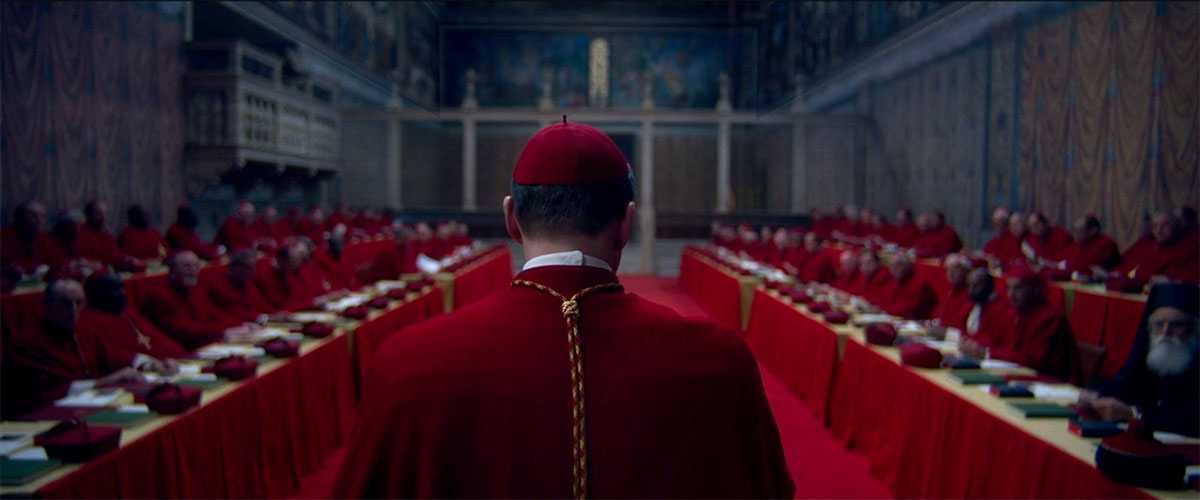
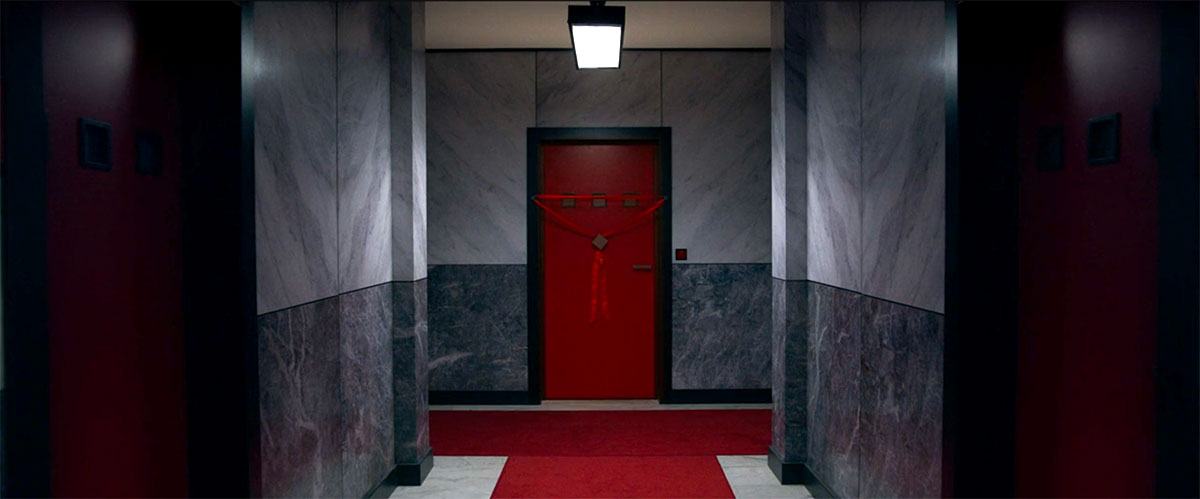
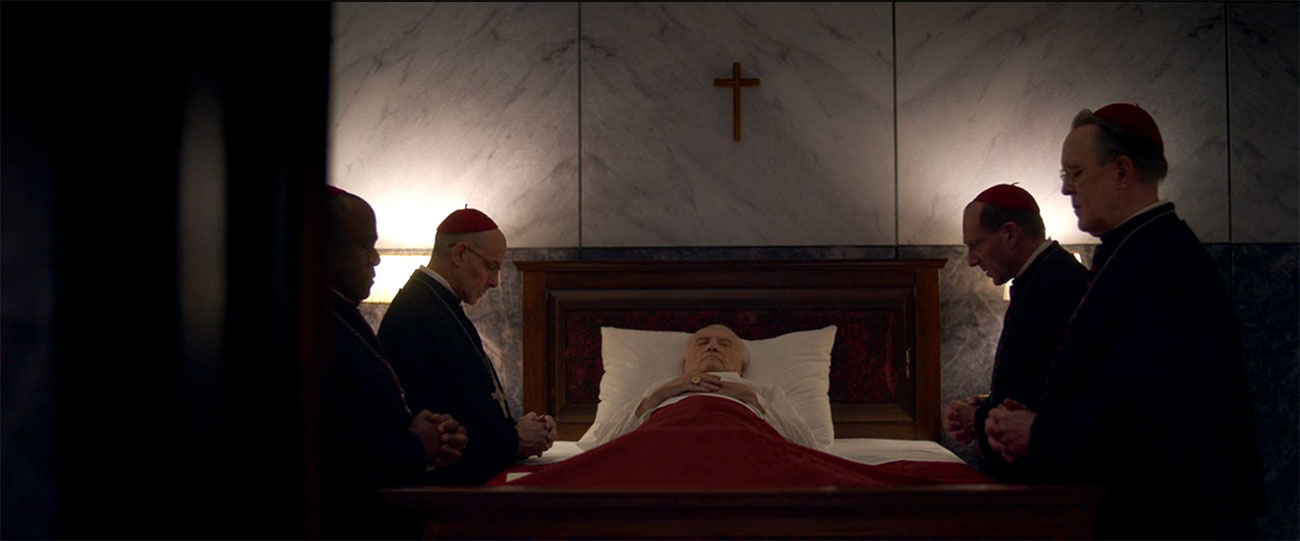
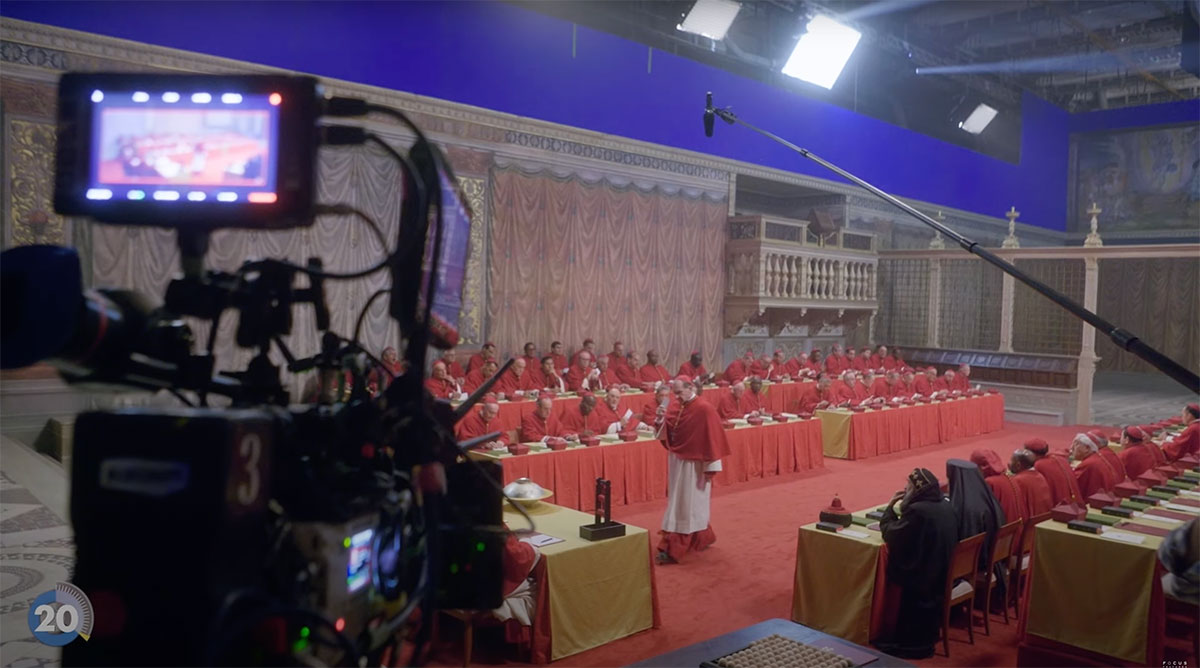
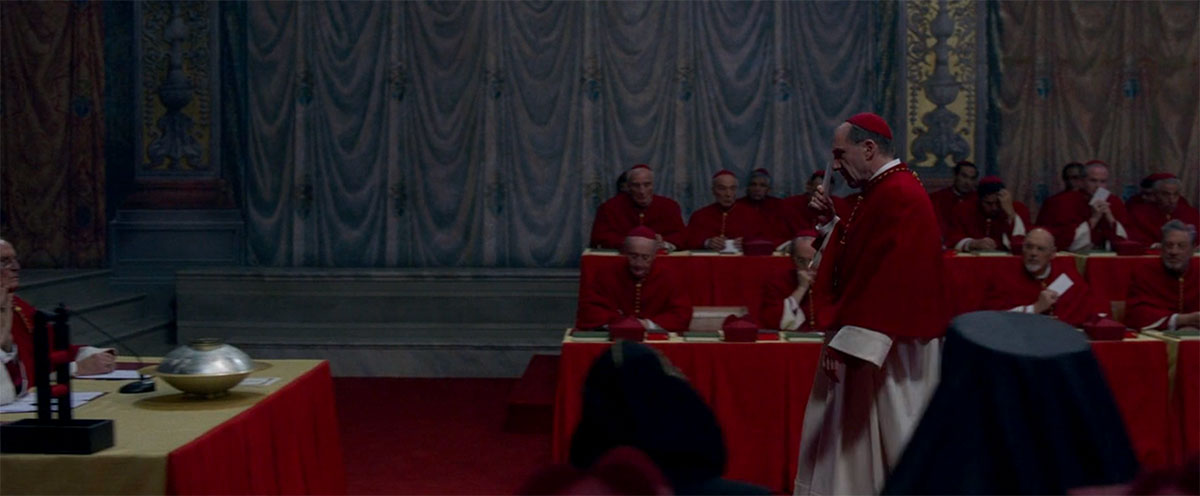
The Effect of Lighting on Characters
When asked by Director of Photography Stéphane Fontaine whether they shoot the various candidates differently, he says:We had to give a fair treatment to each character equally. The main difference came from the nuances in the lighting style depending on the level of intimacy the characters have with each other.
– Stéphane Fontaine
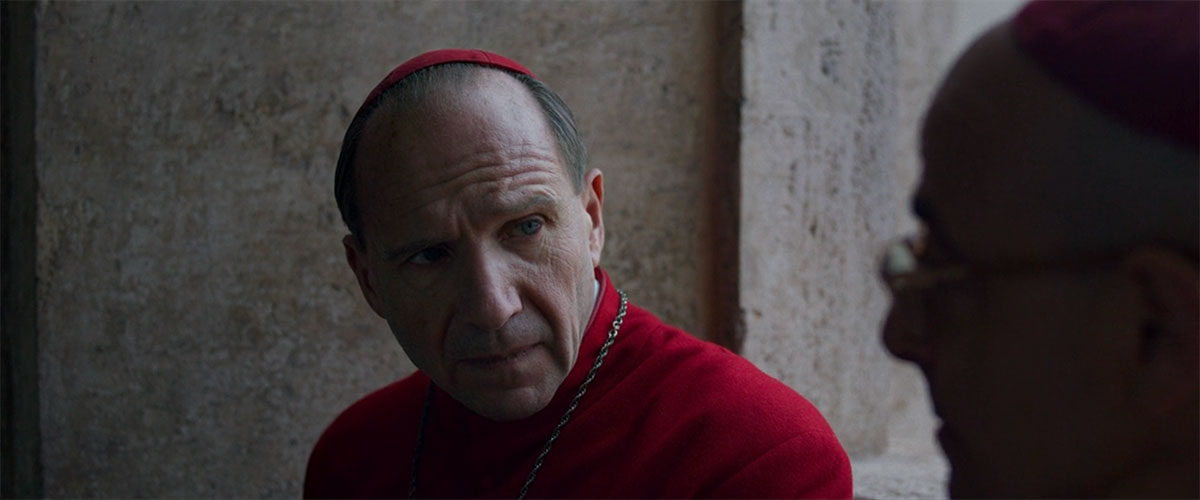
Chiaroscuro Lighting
The film frequently utilizes chiaroscuro lighting—a stark contrast between light and dark areas within the frame—to highlight the internal conflicts and moral ambiguities of the characters. This technique casts pronounced shadows across the actors’ faces, emphasizing their emotional turmoil and the gravity of their decisions during the papal election process.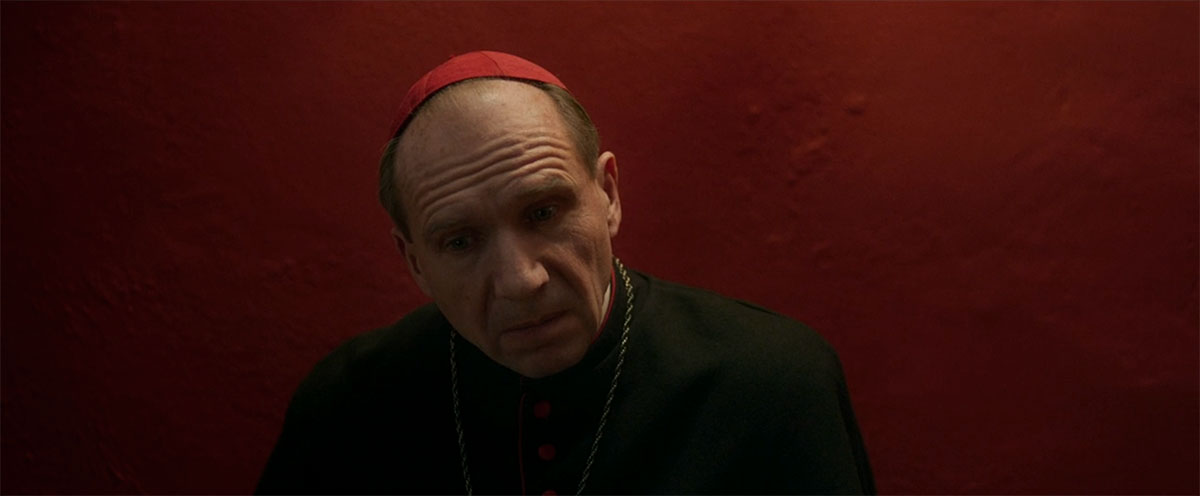
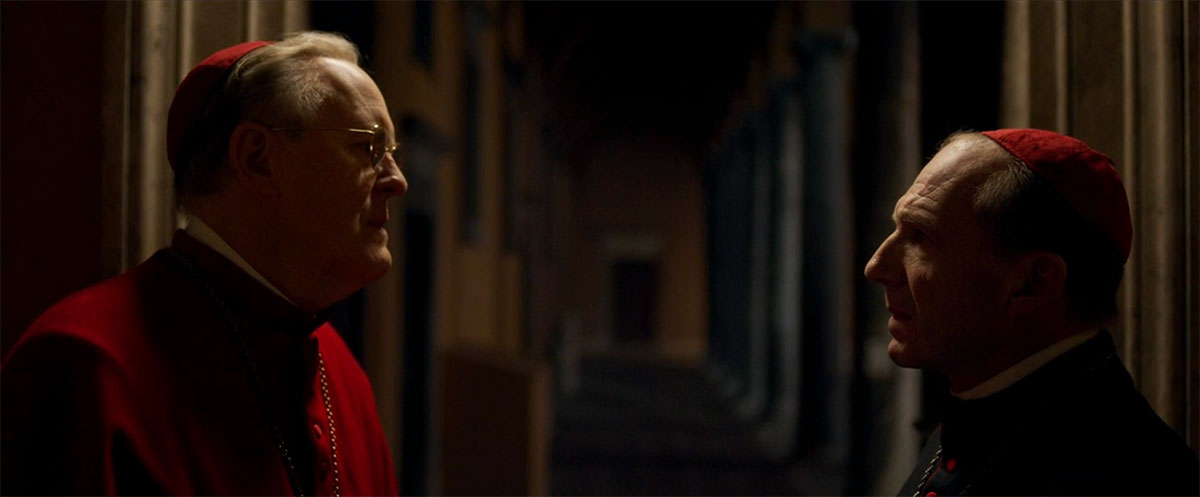
Selective Illumination and Negative Space
In intimate dialogue scenes, selective illumination is employed to focus attention on specific characters or elements, while allowing the surrounding environment to recede into darkness. This method not only directs the viewer’s gaze but also symbolizes the isolation and introspection experienced by the cardinals as they navigate the complex political landscape of the conclave.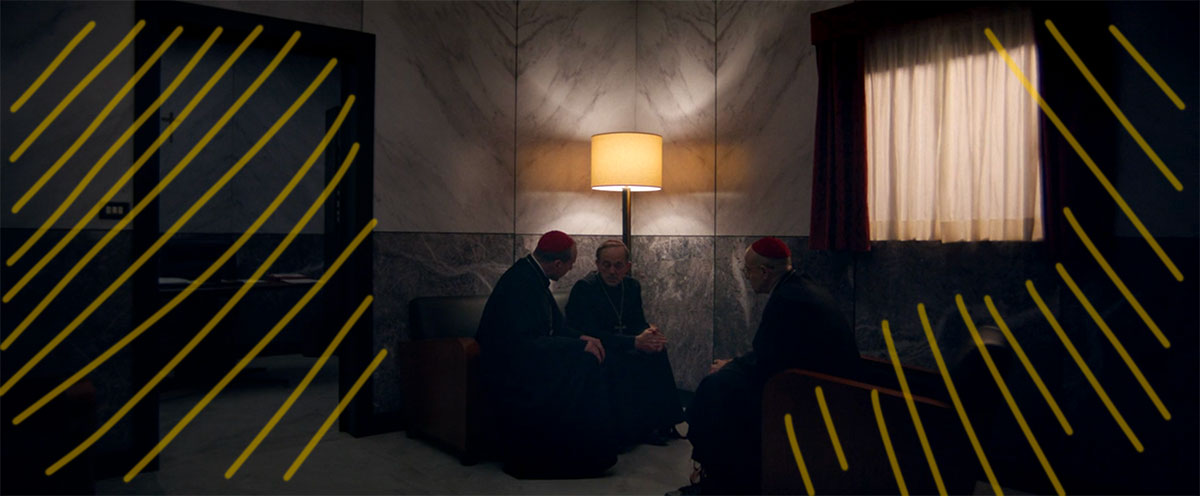
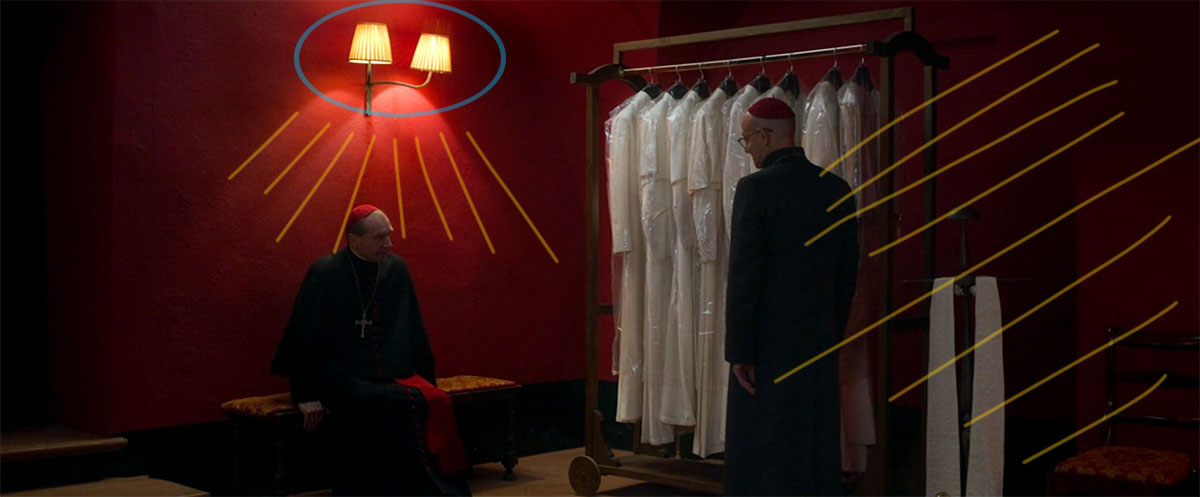
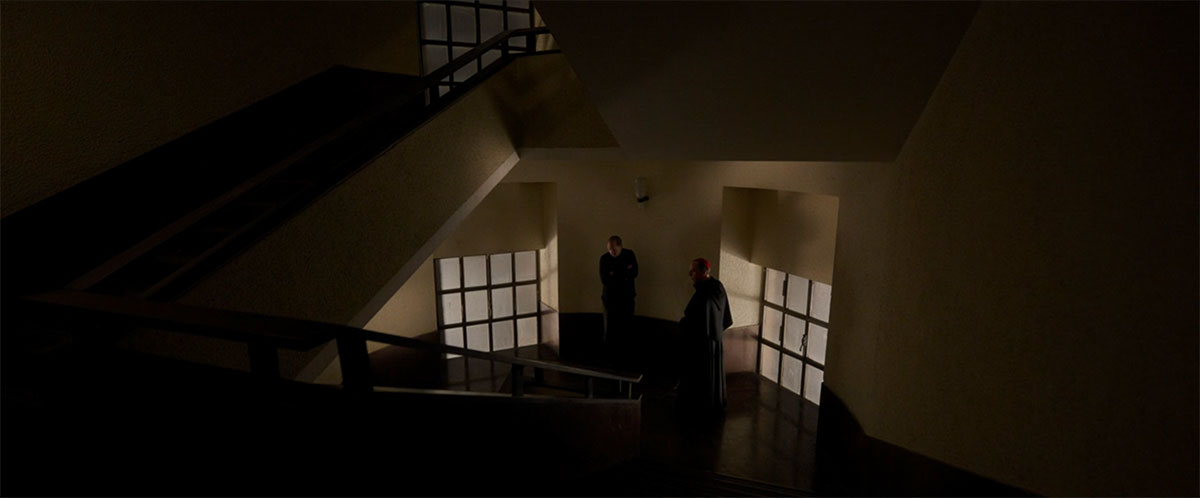
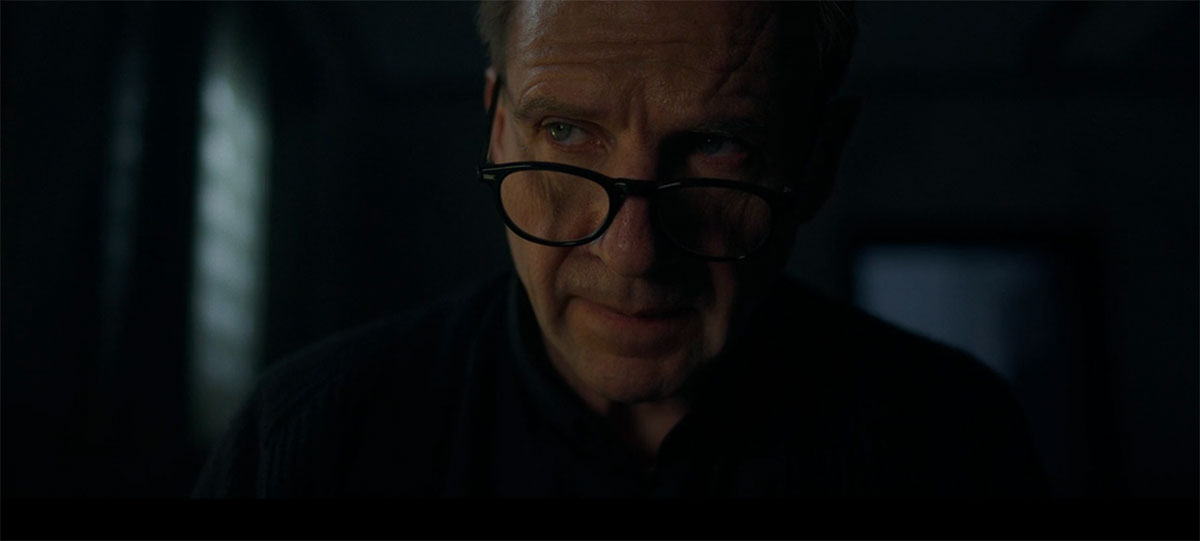
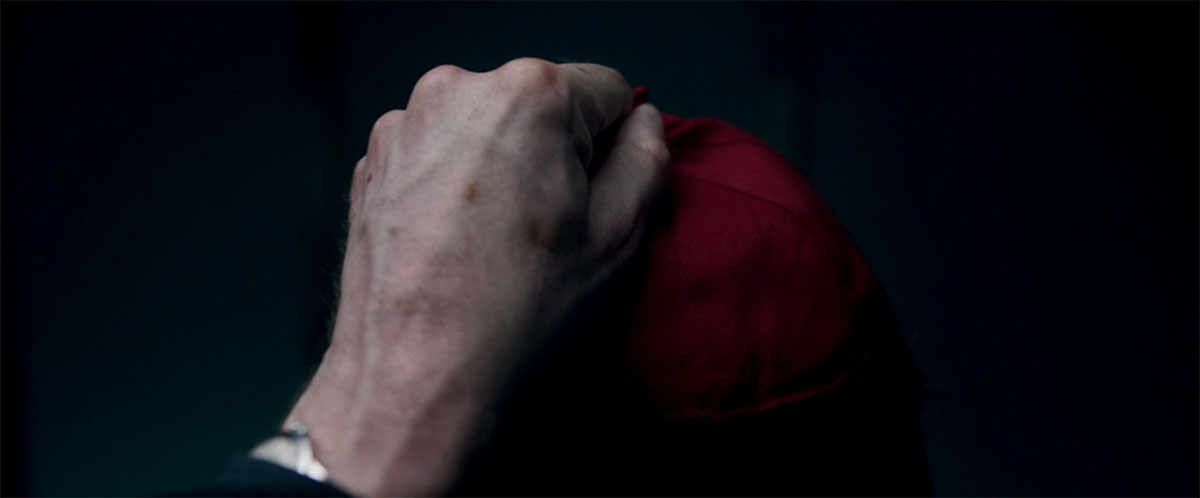
Symbolic Use of Light, Shadow and Contextual Contrast
The interplay of light and shadow in many shots often also serves a symbolic purpose, reflecting the dualities present within the narrative—faith versus doubt, transparency versus secrecy, and tradition versus reform. By manipulating lighting in this manner, the film visually reinforces its exploration of these contrasting themes. There is a cohesive language thought out the film depending on the narrative, not as a whole but also scene by scene. In the below, there are two images where the first image is during a conversation between Cardinal Lawrence (Ralph Fiennes) and Cardinal Aldo Bellini (Stanley Tucci) after Cardinal Lawrence finds out the dirty secret of Cardinal Trambley. The room is lit very dimly, and we see both Cardinals discussing whether this information should go public or not.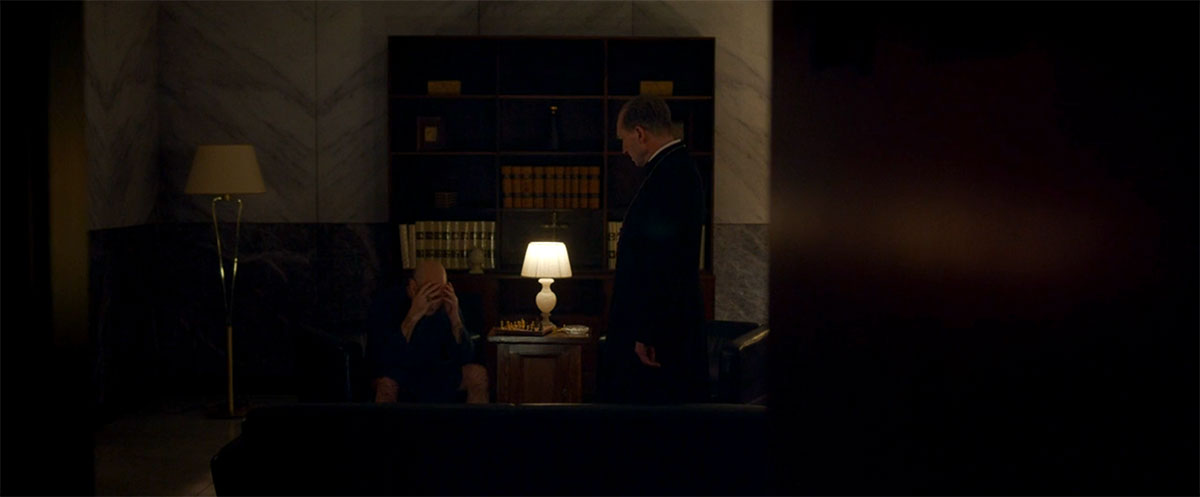
This report is entirely mendacious. It would never have seen the light of day if you had not broken into the Holy Father’s apartment to remove it.
– Cardinal Trembley
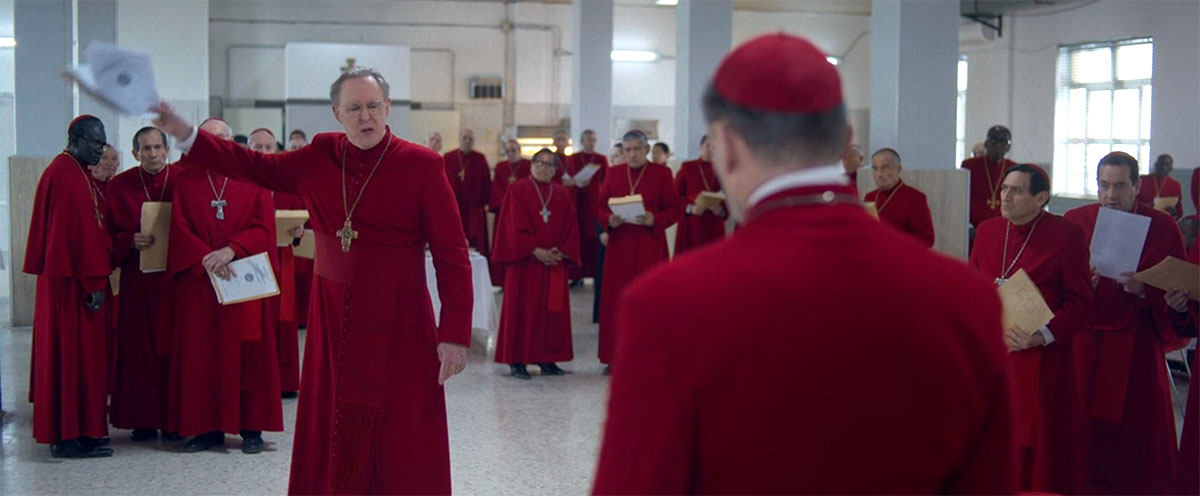
Isolation and Secrecy:
We can see the same approach in the vast, dimly lit theatre hall that surrounds the cardinals in shadow, symbolizing secrecy and the clandestine nature of their political discussions. The sparse lighting highlights only the immediate space where the cardinals sit, emphasizing their isolation from the rest of the world and perhaps even from divine clarity.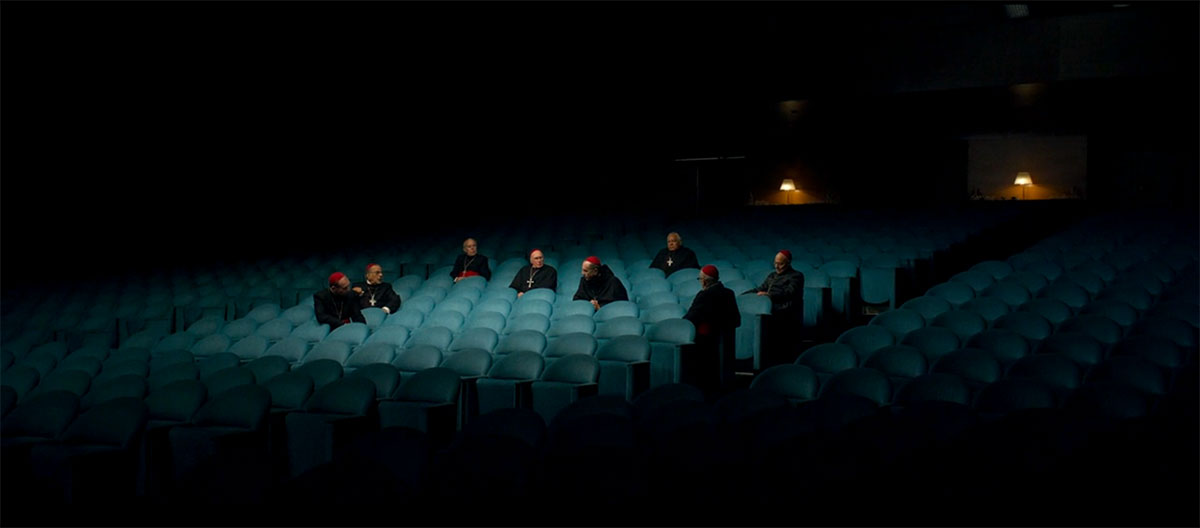
Faith Versus Doubt:
Two small lamps in the background stand as a faint, solitary light source. This could metaphorically represent flickering faith or the distant presence of divine guidance amidst a setting dominated by ambiguity and political tension.Tradition Versus Reform:
The choice to place cardinals in a modern theatre instead of a traditional ecclesiastical setting adds a subtle visual commentary. The contrast between contemporary space and traditional clerical attire symbolizes the tension between upholding tradition and adapting to modern challenges. In this scene, light and shadow are carefully manipulated to create a layered visual narrative, reinforcing the film’s exploration of political intrigue, moral ambiguity, and institutional dualities.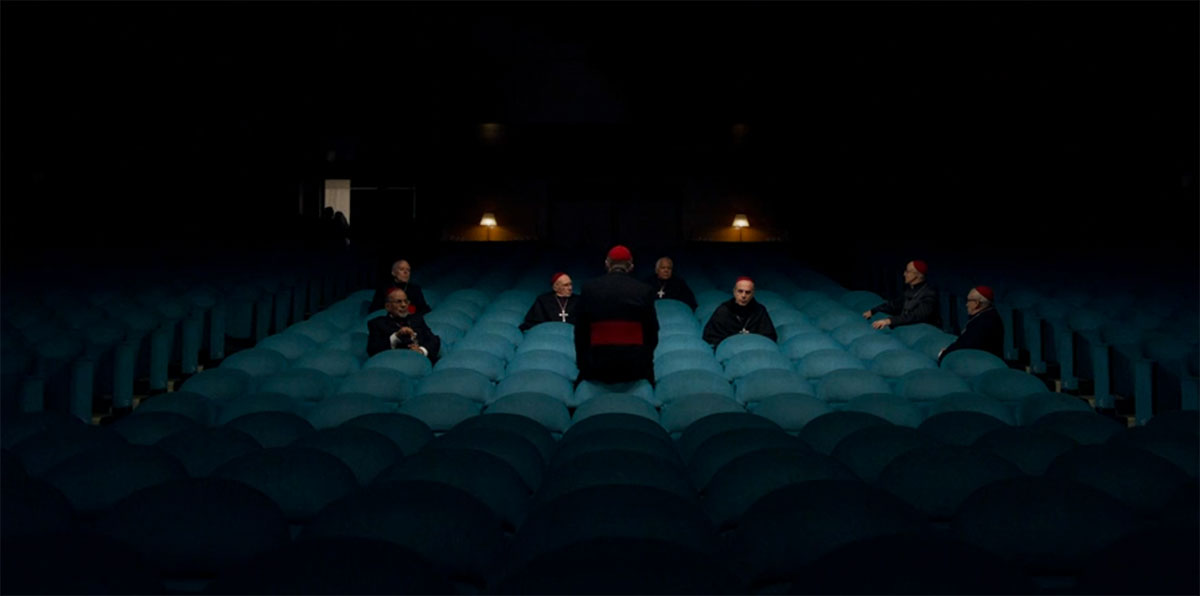
Color Palette and Symbolism
Muted and Cold Tones (Power and Control)
Muted colors are a significant aspect of the visual language in Conclave, contributing to the somber tone of the film. The cold, subdued color palette—ranging from deep blacks to cool blues and grays—mirrors the formal, often bleak atmosphere of the Vatican. These colors suggest control, authority, and the calculated nature of the decisions being made.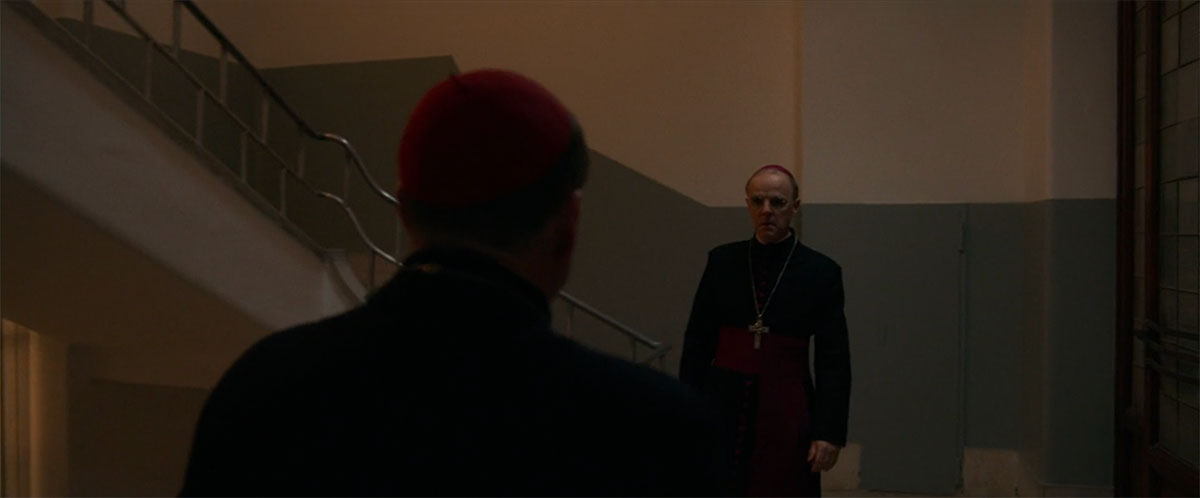
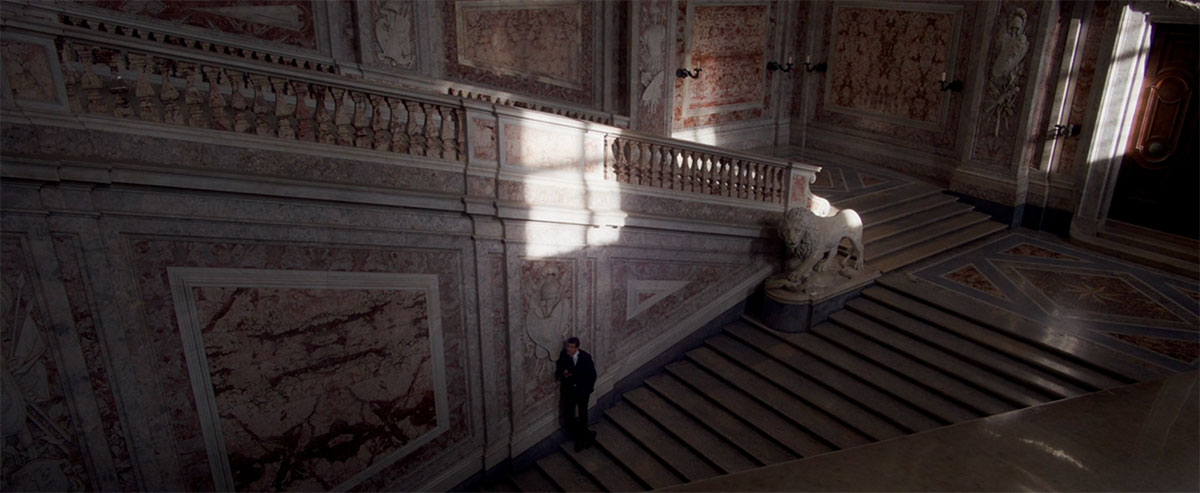
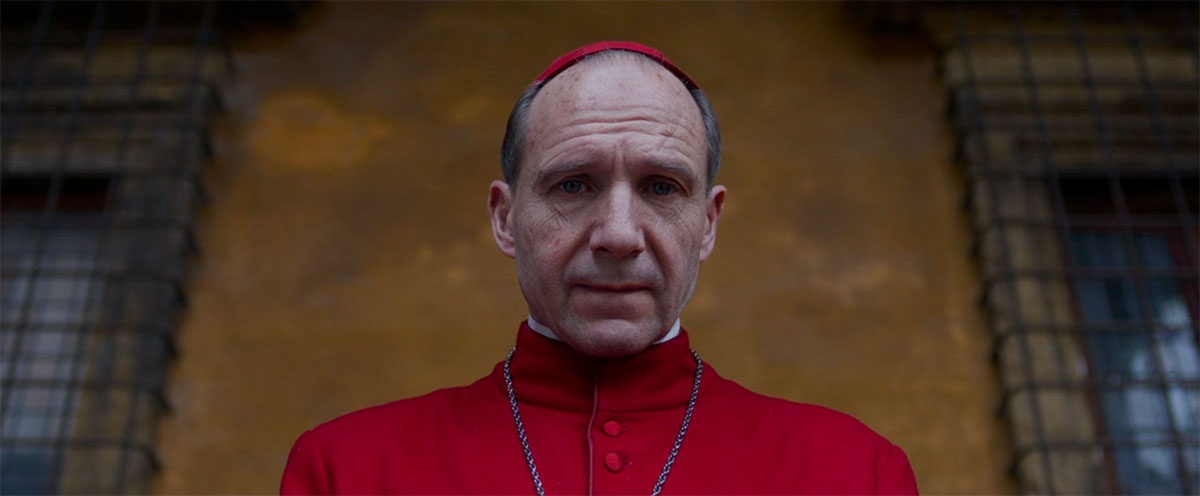
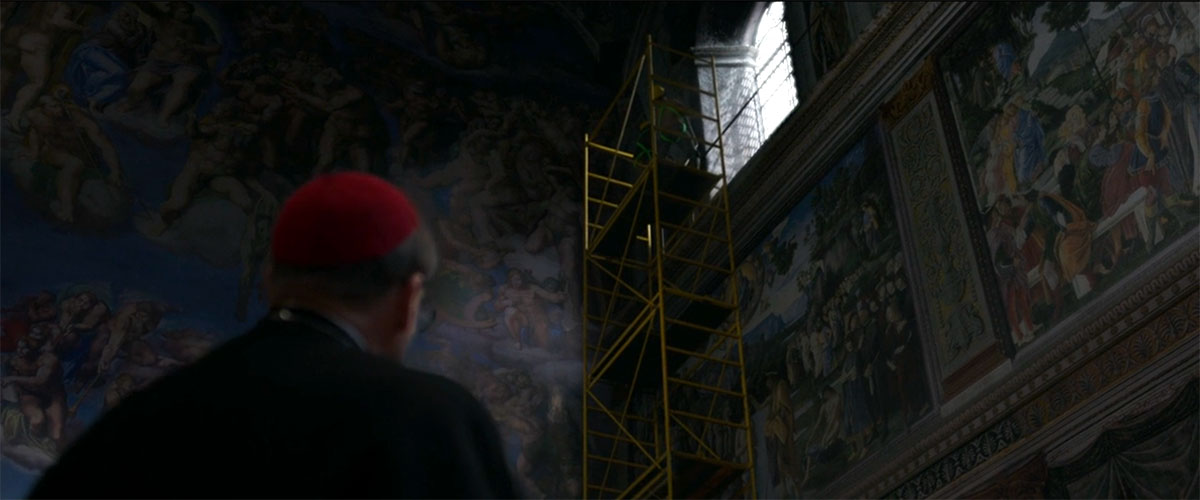
Color Contrast
The juxtaposition of the vibrant red robes of the cardinals against the neutral tones of the Vatican’s architecture creates a striking visual contrast. This not only adds aesthetic appeal but also symbolizes the tension between tradition and the evolving dynamics within the Church.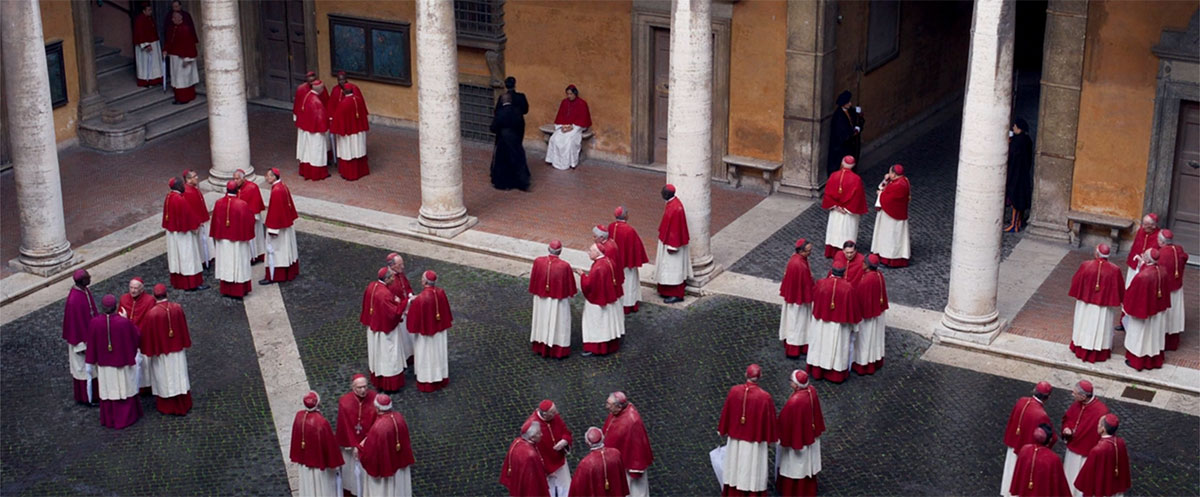
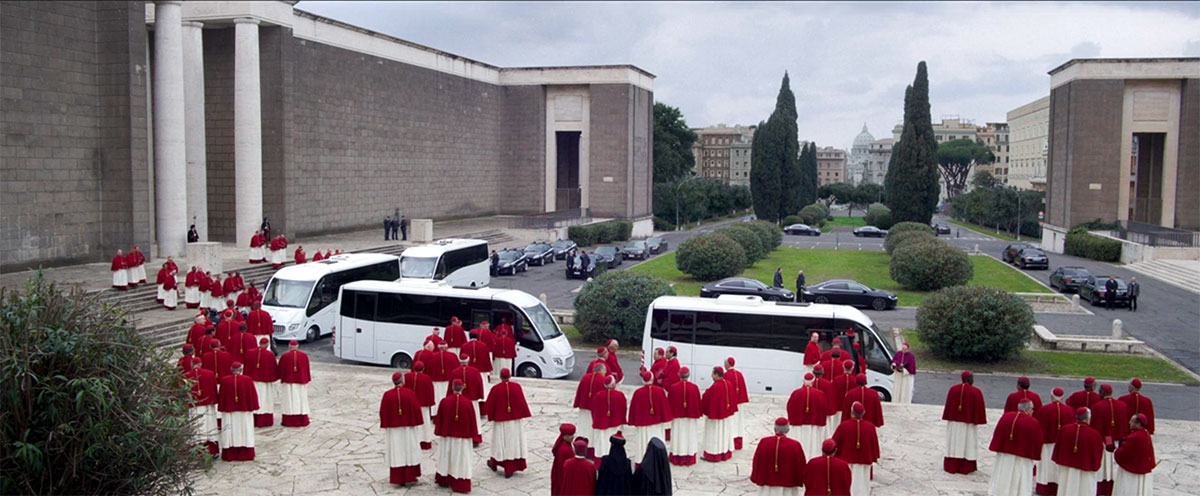
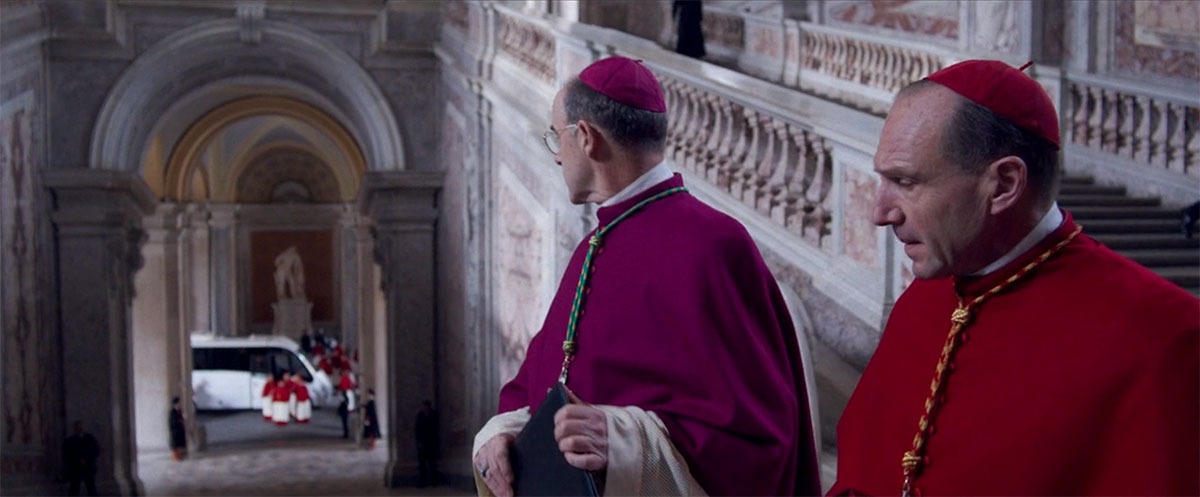
Framing and Composition
Wide-Angle Shots
The film captures the opulence of the Vatican, utilizing wide-angle shots to emphasize its vastness and the imposing nature of the institution. This approach underscores the weight of tradition and the solemnity of the conclave process.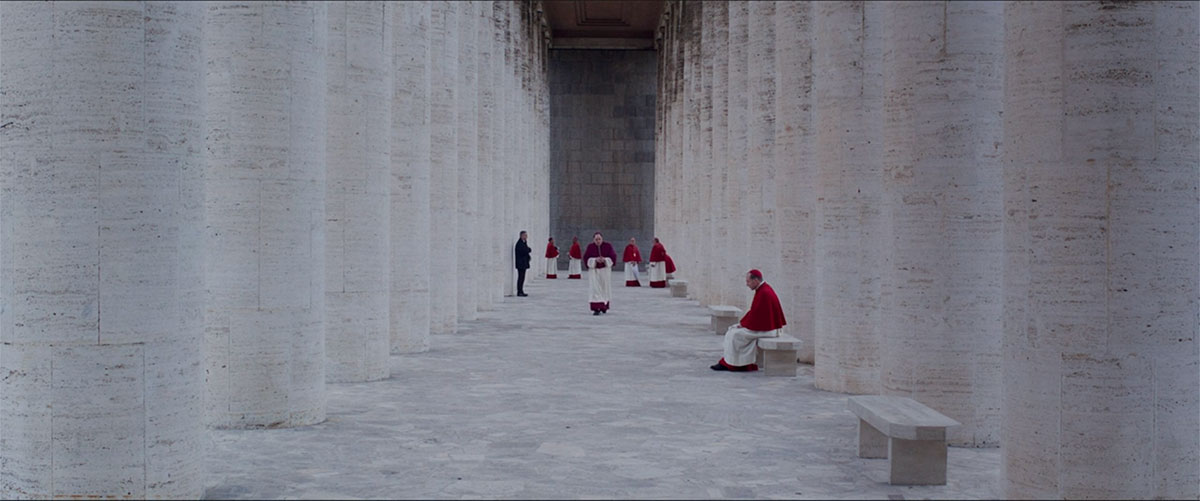
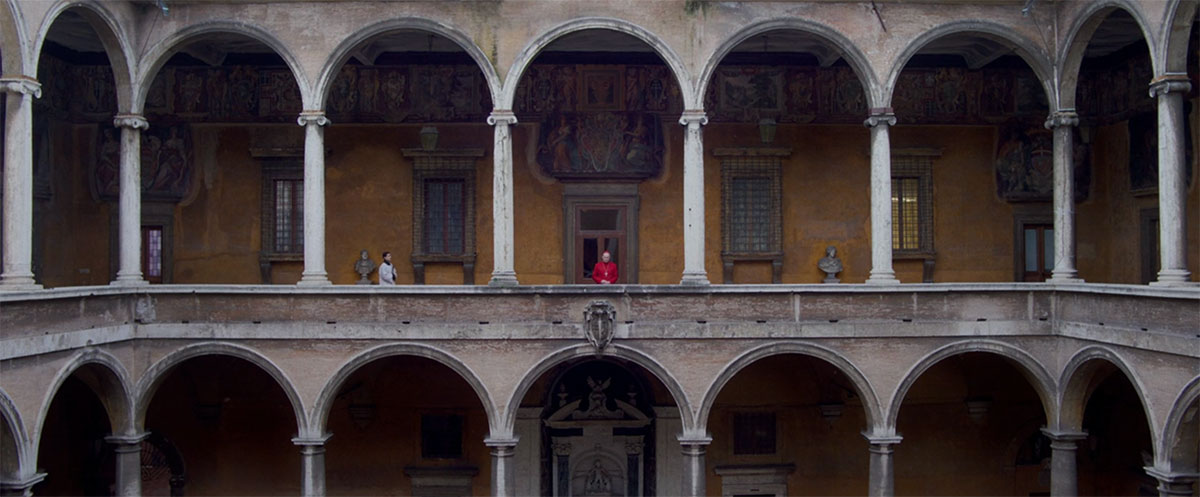
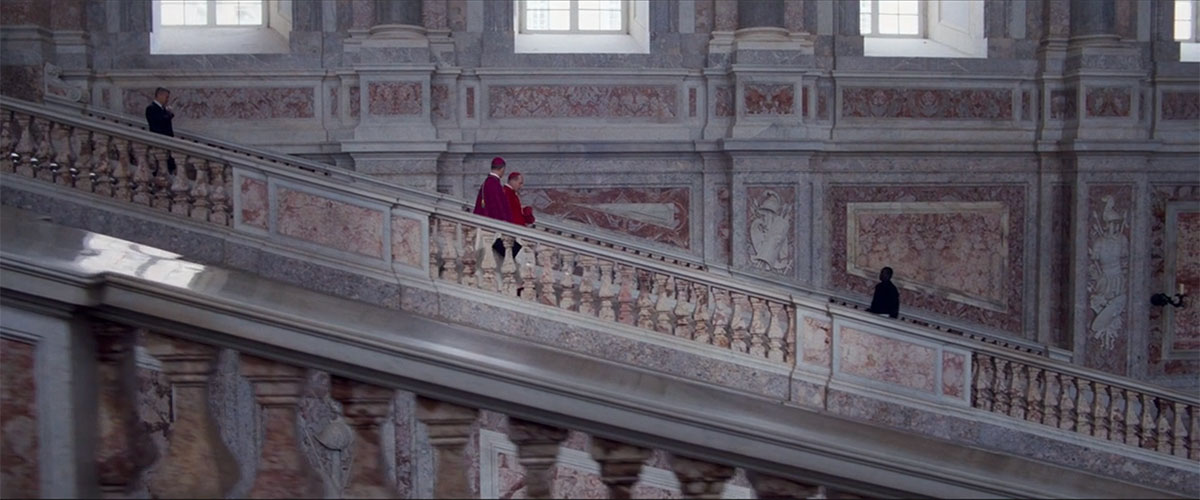
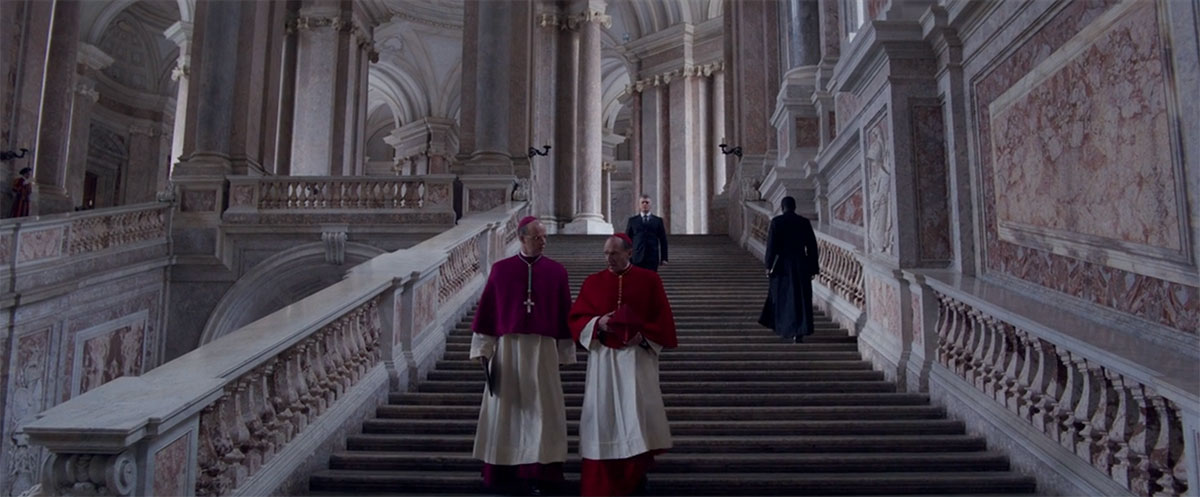
Low-Angle vs High-Angle
In photography, low-angle shots are taken from a position below the subject, looking up. This perspective often conveys a sense of power, dominance, or importance. It can make the subject appear larger, more imposing, and commanding, which is why it’s commonly used to depict figures or objects that are meant to evoke authority or strength. Low-angle shots can also create a feeling of awe or admiration, as if the subject is elevated or superior to the viewer. The two images below are a great example of low angle shots. While the low-angle shot of the cross emphasize a feeling of the divine or eternal, or the authority and power of the church but at the same time the silhouette effect strips away any distracting details, focusing solely on the cross’s shape, which could evoke a sense of mystery, reverence, or struggle.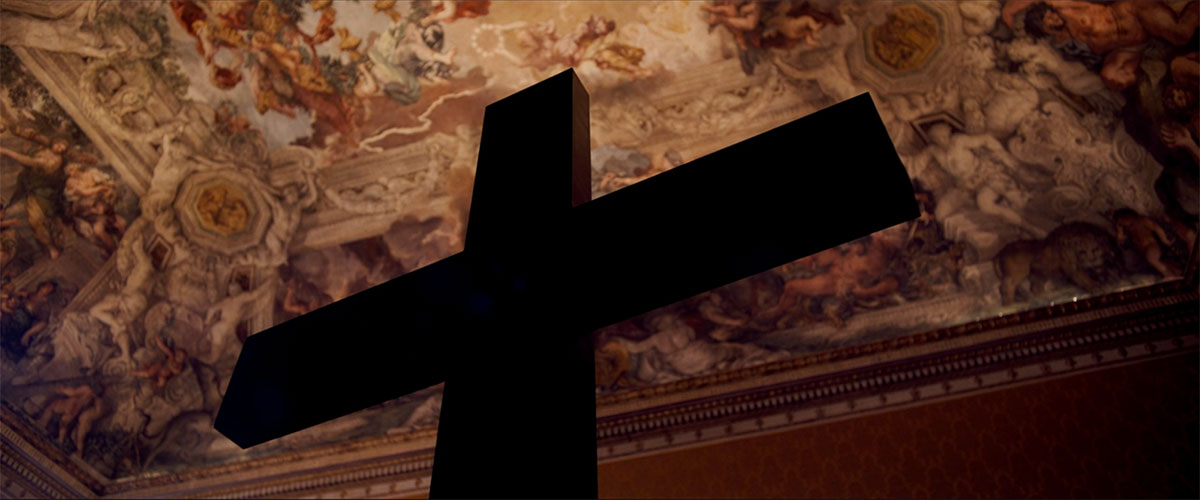
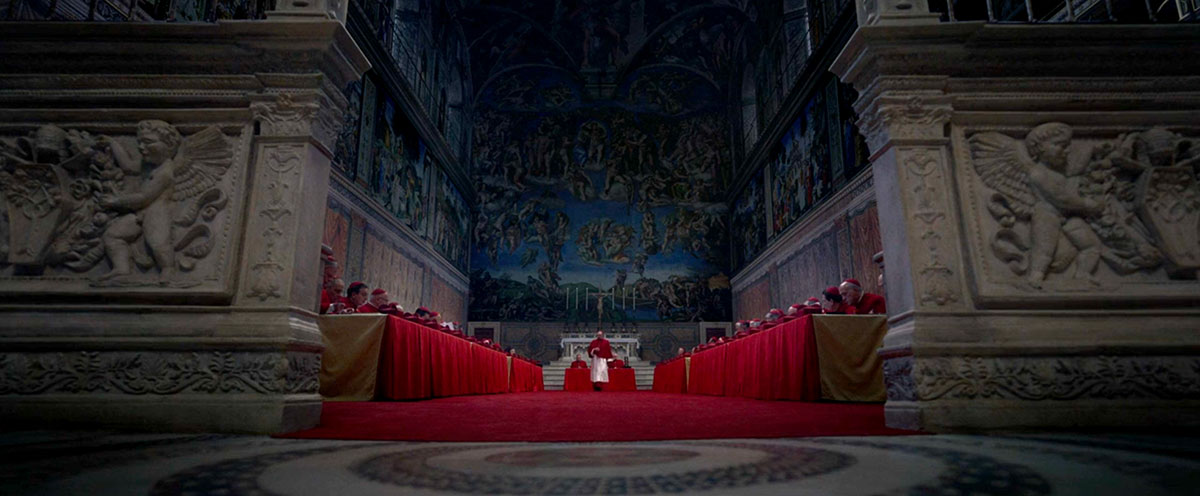
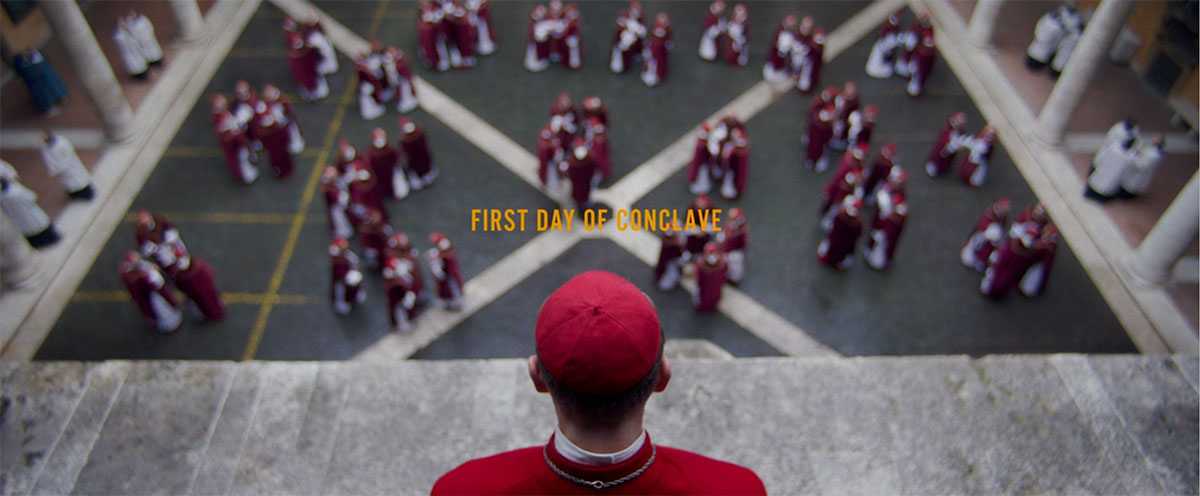
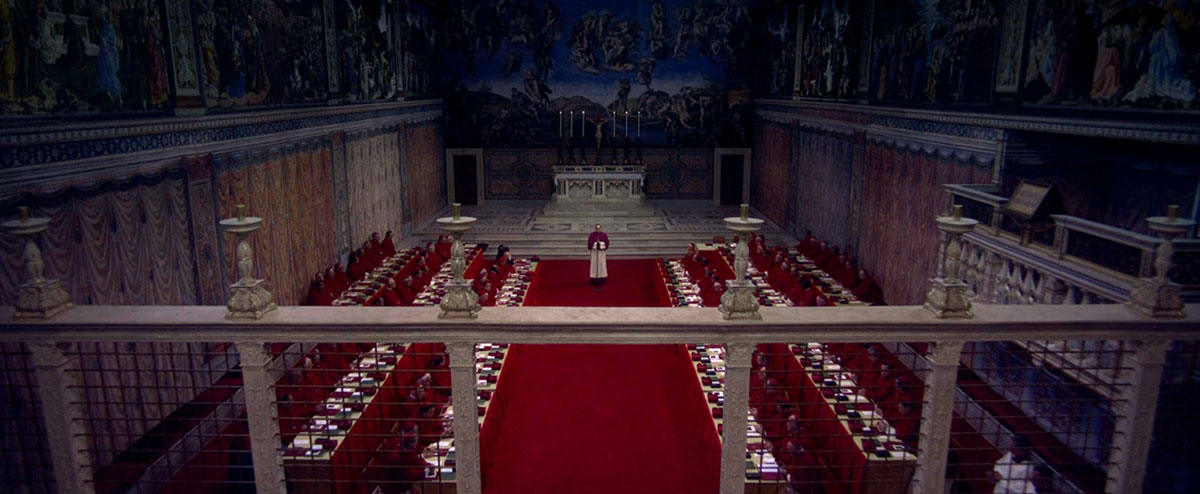
Close-Up Shots and Depth of Field
Director Edward Berger and cinematographer Stéphane Fontaine utilize framing techniques that focus on characters’ reactions during off-screen dialogue, adding depth to the narrative. This approach allows for a more intimate connection with the characters and their internal conflicts. The cinematography in the move often employs close-up shots with a shallow depth of field, filling the frame with actors’ faces to capture subtle expressions and emotions. This technique draws viewers into the personal dilemmas and moral complexities faced by the characters.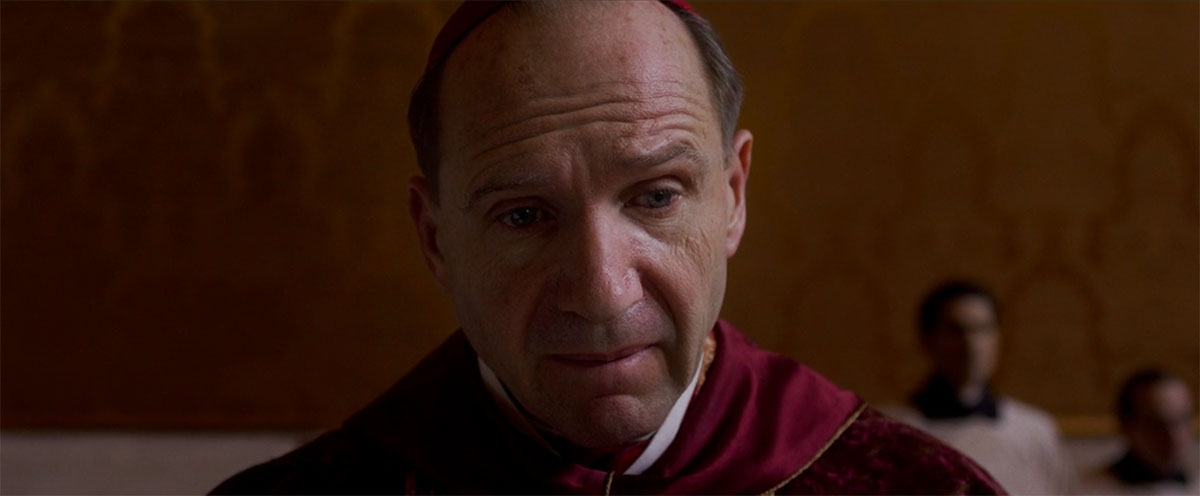
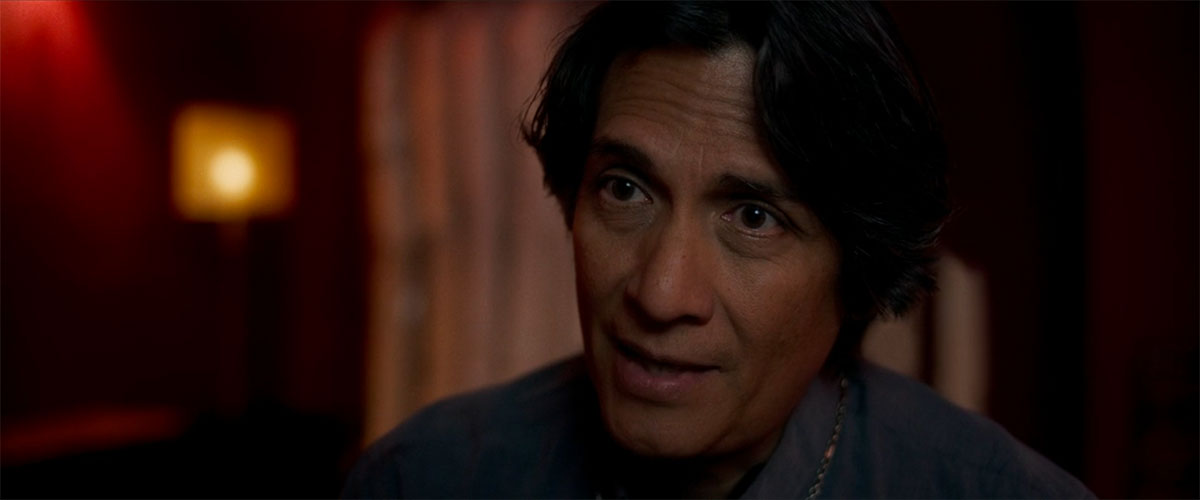
Frame-in-Frame
The frame-in-frame technique in photography serves multiple artistic, emotional, and compositional purposes. Its primary aim is to enhance the visual storytelling by guiding the viewer’s eye, creating depth, and adding layers of meaning to the image. The below image which is used in the official trailer of the movie by Focus Features Films is one of the many examples of ‘frame in frame’ technique which you can came across in the movie. The subject is placed exactly infront of the window where the natural daylight is coming through and the curtains that are in shadow represents an inner frame that guides the viewer’s eyes inward toward the subject. The composition creates a sense of focus or draw attention to the contrast between the frame and the framed scene. There is a separation between the character (subject) and the background and – a stark contrast between light and dark (transparency & secrecy) areas within the frame—maybe to highlight the internal conflict and moral ambiguities of the main character since we can see Cardinal Lawrence’s eyes are closed and we can sense that he feel trapped and the narrow triangle shape which is created with the curtains strenghtens this narrative.